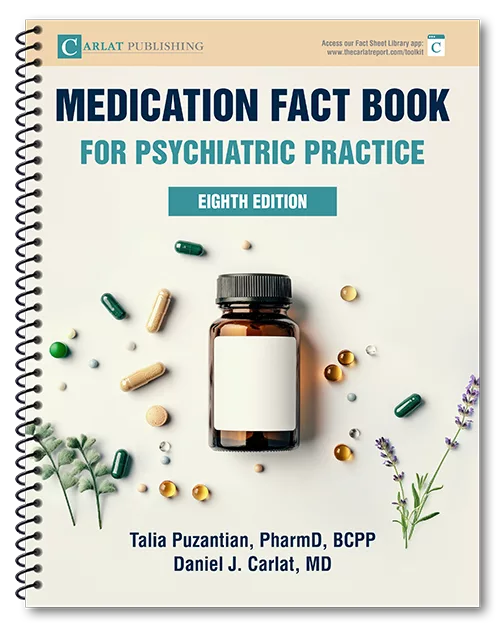Home » Journal Articles as Marketing: Tricks of The Trade
Journal Articles as Marketing: Tricks of The Trade
March 1, 2005
From The Carlat Psychiatry Report
Daniel Carlat, MD
Dr. Carlat has disclosed that he has no significant relationships with or financial interests in any commercial companies pertaining to this educational activity.
It probably comes as little surprise to most readers that manufacturer-sponsored research is more likely to yield an outcome favorable to the sponsored product than similar non-sponsored research.
What may be surprising is that there is actually a good-sized body of published research (non-sponsored, of course!) on this very topic. In fact, a systematic review of these “biasevaluating” studies was published by the British Medical Journal in 2003. These researchers searched Medline and located 30 good-quality studies that analyzed whether company-sponsored research led to different outcomes than research funded by non-commercial sources. The research reviewed spanned the specialties of medicine, and included trials of medications for Alzheimer’s disease, major depression, osteoarthritis, venous thromboembolism, and a number of other conditions.
How do companies manage to subtly craft research design so that the data will support their product? Here is TCR’s list of Top Four Techniques for turning a research article into a marketing tool.
General PsychiatryWhat may be surprising is that there is actually a good-sized body of published research (non-sponsored, of course!) on this very topic. In fact, a systematic review of these “biasevaluating” studies was published by the British Medical Journal in 2003. These researchers searched Medline and located 30 good-quality studies that analyzed whether company-sponsored research led to different outcomes than research funded by non-commercial sources. The research reviewed spanned the specialties of medicine, and included trials of medications for Alzheimer’s disease, major depression, osteoarthritis, venous thromboembolism, and a number of other conditions.
Industry-funded articles are four times more likely to endorse the sponsored drug than other articles.The results? Studies sponsored by pharmaceutical firms were four times more likely to show results favoring the drug being tested than studies funded by other sources. (BMJ 2003; 326:1167).
How do companies manage to subtly craft research design so that the data will support their product? Here is TCR’s list of Top Four Techniques for turning a research article into a marketing tool.
- Make sure your drug has a dosage advantage. This way, you can present your findings as a “head-to-head” trial without worrying that your drug will be outperformed. Thus, a recent article on Cymbalta concluded that “in three comparisons, the mean improvement for duloxetine was significantly greater than paroxetine or fluoxetine.” (Depression and Anxiety 2003, 18; 53-61). Not a surprising outcome, considering that Cymbalta was ramped up to a robust 120 mg QD, while both Prozac and Paxil were kept at a meek 20 mg QD.
- Dose their drug to cause side effects. Forest has been the superstar of this marketing strategy lately, as “tolerability” has become the buzzword of drug reps everywhere. The original Lexapro marketing relied heavily on a study comparing Lexapro 10 mg and 20 mg QD with Celexa 40 mg QD--yes, patients in the Celexa arm were started on 40 mg QD (J Clin Psychiatry 2002; 63:331-336). The inevitably higher rate of discontinuation with high-dose Celexa armed Forest reps with the spin that Lexapro is the best tolerated of the SSRIs. More recently, the same “methodology” was used in a comparison of Lexapro with Effexor. Patients on Lexapro were increased to 20 mg QD after a week; those on Effexor were rocketed up to 225 mg QD over that same time frame. Not surprisingly, four times as many Effexor patients dropped out of the study, mainly due to nausea induced by this rapid upward titration (J Clin Psychiatry 2004; 65:1190-1196).
- Pick and choose your outcomes. If the results of the study don’t quite match your high hopes for the drug, start digging around in the data, and chances are you’ll find something to make you smile! Neurontin (gabapentin) is a case in point. Many psychiatrists prescribe this novel anticonvulsant for anxiety, partly because of a frequently cited placebo-controlled study of Neurontin for panic disorder (J Clin Psychopharm 2000; 20:467-471). In this trial, about 50 patients were enrolled in each treatment group, but after eight weeks there were no significant differences between Neurontin and placebo in panic scores or response rate. The researchers--and note that the lead authors were employees of Parke- Davis--then did a “post hoc” analysis in which they focused on a subset of patients with more severe baseline anxiety. While Neurontin still could not beat placebo in response rates in this group, it did lead to lower average panic scores. But even this result is suspect, because post hoc analyses are notoriously unreliable--the more outcome measures you look at, the higher the chance that any drug/placebo difference you find occurred purely by chance.
- Practice “creative writing” in the abstract. You’ve sliced and diced and flogged your data, but it still doesn’t fit neatly into your overall marketing plans. Now it’s time to get creative with the abstract, which is often the only part of the article to be widely read. A good example, cited in an excellent review of how drug companies influence psychiatric research by Daniel Safer (J Nerv Ment Dis 2002; 190:583- 592), can be found in the abstract of a Janssen-funded article comparing Risperdal (risperidone) with pimozide in the treatment of Tourette’s Syndrome (J Clin Psychiatry 2001; 62:50-56). The two treatments did not differ in either efficacy or in objective measures of side effects, but somewhat more patients on pimozide “reported EPS spontaneously.” In terms of side effects, there was no difference in scores on the ESRS (Extrapyramidal Symptom Rating Scale), and the authors did not disclose how they ascertained that what the pimozide patients reported spontaneously were actually EPS, a relevant point given that the objective scale showed no difference in EPS. This questionable side effect difference between the two treatments did not deter the enthusiasm of the authors, who concluded their abstract with: “Risperidone may become the first-line drug in the treatment of Tourette’s disorder owing to a more favorable efficacy and tolerability profile.” Now that’s creative!

Issue Date: March 1, 2005
Table Of Contents
Recommended
Newsletters
Please see our Terms and Conditions, Privacy Policy, Subscription Agreement, Use of Cookies, and Hardware/Software Requirements to view our website.
© 2025 Carlat Publishing, LLC and Affiliates, All Rights Reserved.


_-The-Breakthrough-Antipsychotic-That-Could-Change-Everything.webp?t=1729528747)



